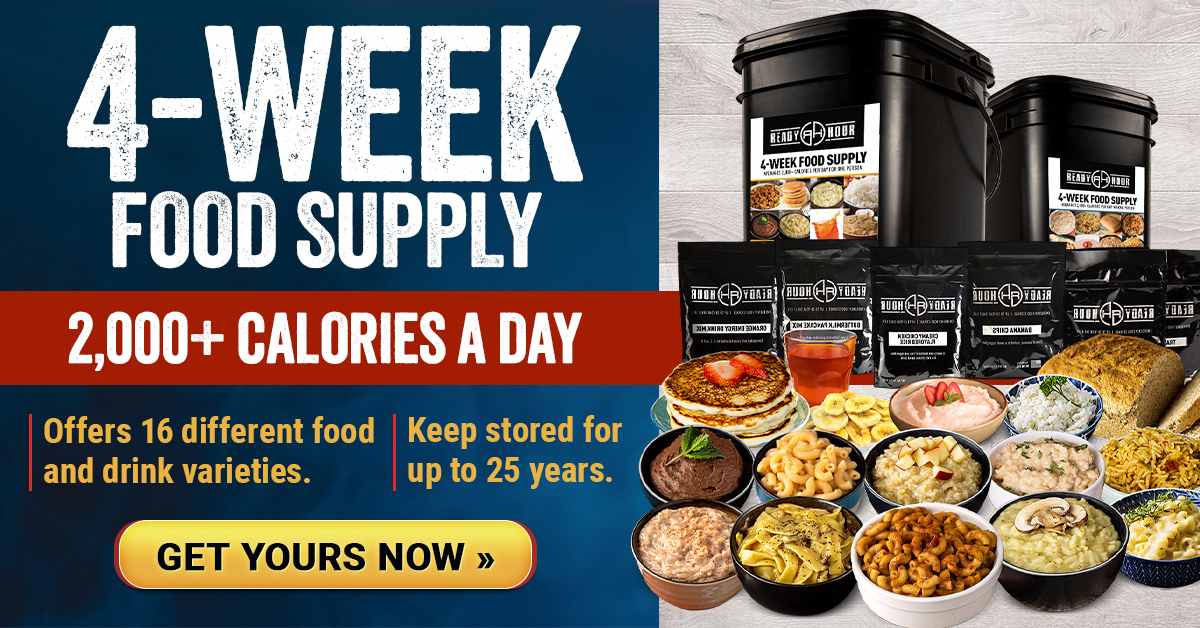The ongoing drought in large parts of the United States is forcing wheat farmers to abandon a portion of their crop at rates not seen in over a century.
According to the U.S. Department of Agriculture (USDA), producers, especially in the U.S. Plains region, are expected to harvest only about 67 percent of their planted acres, the lowest harvest ratio since 1917. (Related: Food collapse incoming: Globalist war on nitrogen emissions putting entire global food supply at risk.)
The high rate of abandonment stemmed from years of freak weather patterns in the Great Plains that took their toll on American grainfields. Many wheat plants planted this winter were stunted by a lack of moisture, making many unable to produce the heads of grain that are harvested for their nutrients.
Farmers who are leaving many of their acres unharvested are filing crop insurance claims for failed acres or abandoning wheat altogether to plant something else.
Justin Gilpin, chief executive officer of the trade group Kansas Wheat, announced that his organization is about to take a tour of Kansas, the country’s top wheat-growing state, to allow analysts to take surveys of fields and make production estimates.
“We’ll see short wheat, thin strands, some wheat that looks really good and a lot of fields that aren’t going to be harvested,” he said.
Kansas, Texas wheat suffering greatly
All told, some 37.5 million acres were planted last fall, either with soft red or hard red winter wheat. The Agriculture Department’s estimate suggests that just 25.3 million of those planted acres of wheat have grown anything worth harvesting.
Of the 67 percent of wheat that can be harvested, the USDA noted that just 28 percent of that crop has been rated to be in good-to-excellent condition.
The soft red winter wheat crop is used mainly as animal feed and for processed foods, while hard red winter wheat is used in baked goods. Hard red wheat also represents about 40 percent of total U.S. wheat production and can be grown either as a cash crop or a cover crop.
In Kansas, the top producer of hard red winter wheat, around 10 percent of the crop was abandoned. Meanwhile, in Texas, a whopping 65 percent of hard red wheat acres were abandoned.
Both abandonment rates are well above the historical averages of six percent for Kansas and 55 percent in Texas over the past 10 years. They are also well above the rate of abandonment predicted by agriculture analytics firm Gro Intelligence of eight percent in Kansas and 60 percent in Texas.
The punishing conditions the country’s hard red winter wheat have been in are underlined by the USDA’s crop conditions report. In Kansas, only 11 percent of the crop is in good-to-excellent condition, far below the 38 percent five-year average. Hard red winter wheat in Texas, Nebraska and Oklahoma aren’t much better at 20 percent, 12 percent and seven percent, respectively.
Wheat futures rising as analysts predict more trouble for crops
The USDA warned that the high rate of abandonment will drag American wheat supplies to levels lower than analysts were expecting. Levels are expected to fall to their lowest in 16 years.
This will keep domestic prices elevated and lead to more wheat imports from rival producers in countries like Canada and Argentina.
Concerns about tight U.S. wheat supplies and ongoing troubles in the Black Sea caused by the Russian special military operation in Ukraine are causing wheat futures to rise.
Futures for hard red winter wheat, the staple variety grown in drought-stricken states like Kansas, Oklahoma and Texas, surged by nearly seven percent following the release of the USDA’s data. This is the biggest intraday gain for the most-active contract since October 2022.
Learn more about the threats to America’s food supply at FoodSupply.news.
Watch this episode of “Brighteon Broadcast News” as Mike Adams, the Health Ranger, interviews Jim Gale as to how growing food can protect families against food collapse.
This video is from the Health Ranger Report channel on Brighteon.com.
More related stories:
- EPA approves chlormequat chloride pesticide for wheat, barley and oat crops, putting human and mammalian reproduction at risk.
- Food insecurity a growing problem in US – America turning into a third-world country.
- According to the globalists, we are one crop failure away from “food system meltdown” – new consumables added to the shortage and/or inflation list.
- Alarming new numbers show why countless Americans will starve to death in the years ahead with one retailer who “can’t afford” to sell eggs anymore.
- David DuByne warns: Forced rationing of food and fuel already happening via “excess consumption” programs – Brighteon.TV.
Sources include:
- Finance.Yahoo.com
- WSJ.com
- FarmPolicyNews.Illinois.edu
- FoodBusinessNews.net
- Brighteon.com
- NATURAL NEWS






Drought? Bullshit.
less bread, more bacon! Mmmmmm good!
This is good news. The Western diet of nutrient-deficient, inflammatory, chemical-ridden grain and soybeans and animals fed these grains and soybeans is the reason it is the least healthy diet in the world. In addition, the industrial agricultural practices that produce these crops is destroying the living soil that was generated over centuries of migrating herds of ruminants grazing the fertile grasslands of our Great Plains. All that rich black dirt has washed down the Mississippi to cause red tide in the Gulf of Mexico. Our “No Longer Great Plains” will be a desert within the lifetime of our grandchildren.
Wait…the lowest harvest ratio since 1917? What about the Dust Bowl of the 1930’s? What was the harvest ratio then? This would have been good to include in the article. I can’t be the only one who had this question.